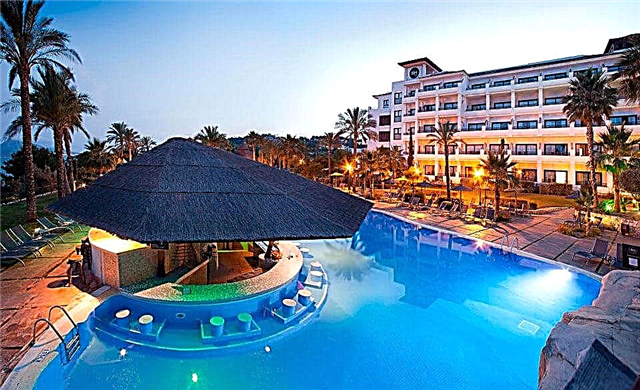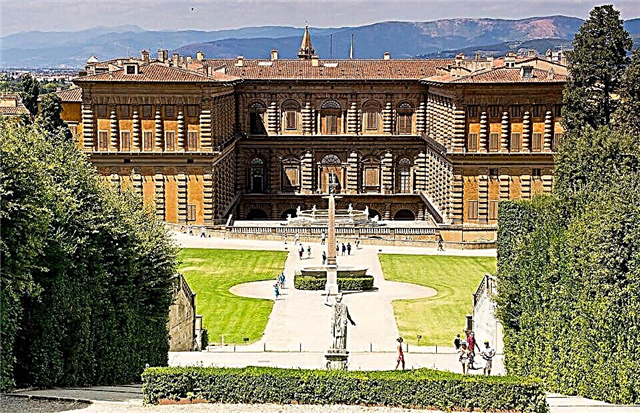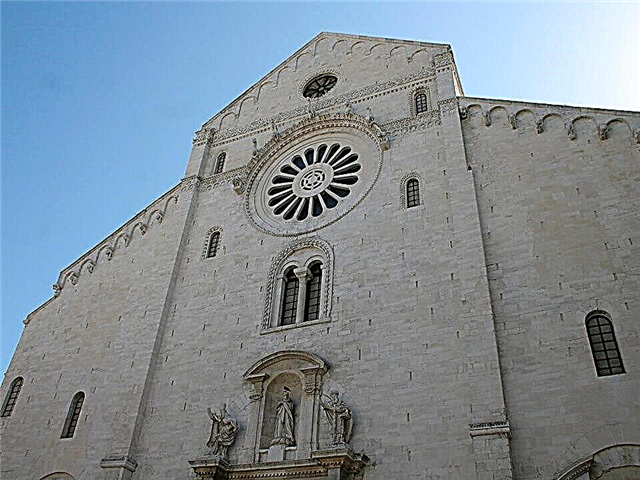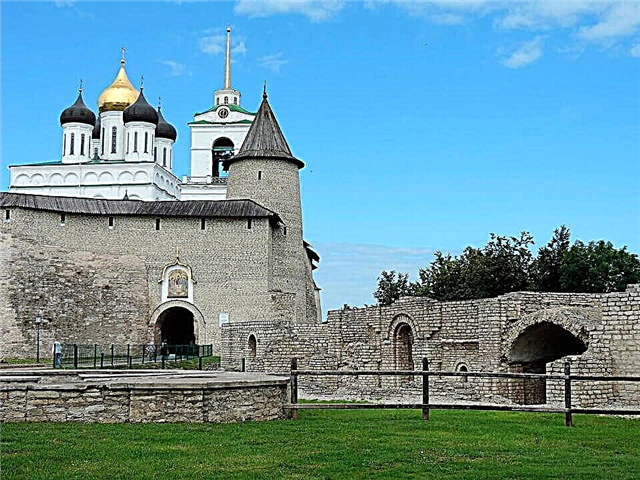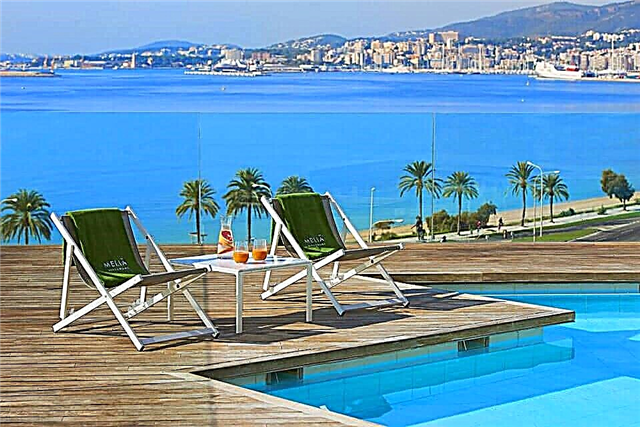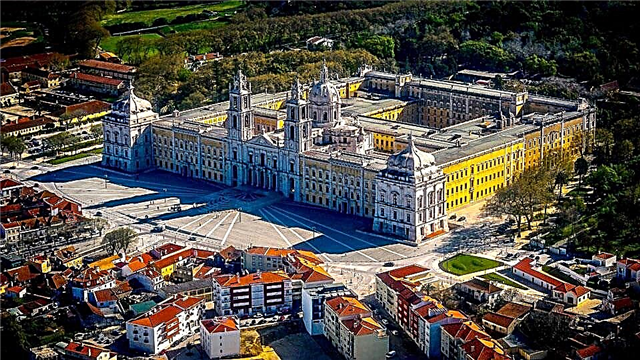"A place where nature and art complement each other perfectly." This is how Hans Christian Andersen wrote about the romantic Sintra, nestled at the foot of the Serra de Sintra mountain range. The Danish storyteller did not sin against the truth. Here, on the Atlantic coast, you will be enchanted by picturesque hills covered with green pine forests, breathtaking views of the vast ocean, medieval castles and luxurious palaces. The old town, whose history dates back to 1154, is located just 29 km from Lisbon. Therefore, a one- or two-day trip here will become a must-see item on the excursion program for those who travel around the Portuguese capital. In this magical land, you can stroll through exotic parks, eat in authentic cafes and visit the sights of Sintra, which will be discussed today.
Castle of the moors

Sintra, 2710
In the 9th century, Portugal came under the control of newcomers from North Africa - the Moors, who had a huge impact on the appearance and culture of the country. One of the architectural legacies left behind by the oppressive Arabs is a defensive castle at the top of a chain of hills. The impregnable fortress was surrounded by a double wall. Its thickness reached 2.5 m. For the construction of a powerful structure, the conquerors used a cunning method: wooden stakes were inserted into the cracks of the boulders, with the help of which they split off pieces of the required size.
In 1147, the Portuguese reclaimed the conquered lands, and the Castle of the Moors lost its defensive functions. In the following centuries, it gradually fell into decay. Only in 1860 the ancient bastion was partially reconstructed. From the original fortress, only five crenellated towers, part of a winding wall and fragments of medieval buildings carved with ominous bas-reliefs remained.
Today, the Castle of the Moors is a true adventure playground. Here you can climb moss-covered walls, explore the ruins of St. Peter's Church, or climb 500 steps to conquer the Real Tower. From a height of 412 m, there are fantastic views of green parks, delightful palaces and the red-tiled roofs of the old city.
Opening hours: daily (from 10:00 to 18:00).
Quinta da Regaleira

Barbosa do bocage 5
The Quinta da Regaleira palace and park complex is located 8 km from the historic center - one of the youngest attractions in the vicinity of the city. Its construction began in 1904 and lasted 6 years. The owner of the estate, Dr. Carvalho Monteiro, full of the desire to transform his possessions into the likeness of Eden, created a truly heavenly place that combines natural beauty and human creations.
The main decoration of Quinta da Regaleira is a delightful multi-tiered garden. If you are going for a walk along the numerous alleys teeming with marble sculptures, delicate gazebos, bizarre grottoes and graceful fountains, stock up on a map. Without it, you risk getting lost.
In the center of the romantic park rises a palace whose vaults are crowned with carved Gothic turrets. The grandiose facade, decorated with patterned stucco molding, was chosen by stone gargoyles, mystical animals and fantastic plants. Inside the building there are spacious halls located on four floors, which have retained the original decoration of the ceilings and walls.
The most famous landmark of Quinta da Regaleira is the Well of Initiation. Downward, to a depth of 27 meters, there is a spiral staircase consisting of 9 flights. These levels represent the 9 circles of hell that Dante described in his "Divine Comedy". At the bottom of the gloomy dungeon, the coat of arms of Monteiro is depicted - a giant eight-pointed star; one of the walls is decorated with a triangle - a symbol of the brotherhood of masons.
Opening hours: 09:30 to 20:00 (April – September) and 09:30 to 18:00 (October – March).
Montserrat Palace

Monserrate, 2710-405
The Montserrat palace and park ensemble owes its glory to the merchant Gerard de Vijm. In 1790, the venerable 64-year-old British rented land located 4 km away. Here, a native of Foggy Albion began to build a castle named in memory of the Montserrat chapel that once stood on this site.
The main treasure of the estate is the delightful landscaped garden. On an area of 33 hectares, about 3,000 representatives of flora from all continents found their home. Artificial waterfalls, manicured ponds and romantic ruins are home to giant pines, spreading palms, age-old araucaria and lush rhododendrons. The paths, surrounded by evergreen lawns, take you to a multi-colored rose garden, a Japanese garden, a valley of ferns, a eucalyptus forest and a corner of Mexico.
Bypassing the vast park, you will find yourself in the palace, the architectural style of which is a vivid mixture of neo-Gothic, Mudejar and eclecticism. Despite the fact that many original furnishings have been sold, Monserrate Palace has not lost its inherent solemnity and elegance. Luxurious halls still captivate guests with ornate stucco molding, dazzling wall and ceiling decoration, marble columns and delicate arches.
Opening hours: daily (except 25.12 and 01.01) from 10:00 to 18:00.
Pena Palace

Estrada da pena
The Pena National Palace dominates the lush greenery of the endless valley. This enchanting structure, built in the 19th century on a 450-meter cliff, seems to have descended from the pages of fairy tales. Its unique architecture combines several directions: Neo-Renaissance and Gothic are here side by side with Portuguese Manueline and Moorish styles, and bright, rich colors perfectly complement the severity of gray stone. Decorative finishing of chic interiors amazes with amazingly beautiful frescoes, mosaics and wall paintings.
The history of this extraordinary castle dates back to the 15th century. According to legend, the place for the construction of the future palace was indicated by the Virgin Mary. King João II, to whom the Mother of God showed her face, built a chapel in honor of the Heavenly Queen. In 1501 it was replaced by the monastery of the Jeronimites. A sad fate awaited the abbey: in the 18th century it was struck by lightning, and an earthquake in 1755 turned the building into ruins.
79 years later, the dilapidated monastery was bought by the king-consort Fernando II. The German-born monarch entrusted the construction of the summer residence to the Prussian architect Ludwig von Eschweg. His brainchild, which was born in 1854, the architect gave the features of the famous German castles: Reinstein in Rhineland-Palatinate and Babelsberg in Potsdam.
Opening hours: daily (except 25.12 and 01.01) from 10:00 to 18:00.
Those interested can take part in a guided tour (available languages - English, Portuguese, Spanish).
Chalet of Countess Edla

Pena Palace is surrounded by a huge park covering an area of 240 hectares. In its western part, among the tree ferns and flowering camellias, there is a small house built on the model of the alpine chalets popular in the 19th century. The picturesque structure resembles a fairytale hut. The exquisite painting of the exterior walls imitates wooden platbands and doorframes, while the carvings that decorate the balcony are reminiscent of oak branches.
The romantic building bears the memory of one of the most famous Portuguese love stories. Fernando II, who in 1853 lost his royal title after the death of his wife Maria II, after 6 years was inflamed with a passion for the opera singer Eliza Hensler. From evil tongues and prying eyes, the couple took refuge in a cozy house built in a park not far from the royal residence.
The lovers legalized their relationship only in 1869. Before the wedding, the chosen one Fernando received the title of Countess of Edla. A fire in 1999 partially destroyed the love nest. The restoration work began in 2007, and after another 4 years, the Chalet of Countess Edla again appeared in front of the guests of Pena Park in its original form.
National Palace

Largo Rainha Dona Amélia
Located in the Old Town, the National Palace is easily recognizable by its two conical 33-meter twin towers, which for several centuries played the role of a kitchen hood. The facade and interior decoration of the former royal residence is a vivid example of a combination of various styles: from medieval Gothic to Arab Mudejar and Portuguese azulejo.
The history of the National Palace began in the 10th century, when Portugal was under the yoke of the Moors who occupied the Iberian Peninsula. In the vicinity, the conquerors built two castles: a bastion, later called the Castle of the Moors, and the residence of Alcazar, where the ruler of the Muslims settled. The palace erected by the Arabs did not see any changes until the 14th century, when the Portuguese king João I launched a grandiose construction campaign.
During his reign, the building acquired an arched facade, carved windows, tapered chimneys and intricately decorated halls. The notorious earthquake of 1755 also affected the National Palace. The revival of the building was not long in coming: restoration work began a couple of months after the natural disaster. The last restoration of the royal residence, which received the status of a national monument in 1910, took place in the 40s of the last century.
Opening hours: daily from 09:30 to 18:00.
Capuchin monastery

Colares, Portugal
If you are tired of contemplating an endless line of lush castles and avoiding popular tourist routes, then the Capuchin Monastery is what you should be interested in. A visit to the ruins of an ancient monastery, lost in the dense thickets of the Sintra-Cascais National Park, will take you to a long-forgotten time. History introduces us to the commander of the Portuguese fleet, João di Castro, who got lost in the forest while hunting and chose a gorge in the rock as a night refuge.
In a dream, the navigator received a revelation that he should build a monastery on this place. Death prevented João from starting construction; the mission of the father in 1560 was completed by his son. For centuries, the poor Capuchin monks lived in complete seclusion. In the 19th century, after the forced dissolution of religious orders, the skete fell into decay and was restored only in 1930.
The entrance to the territory of the monastery is marked by three stone crosses, symbolizing Golgotha. Further, the path goes along tiny corridors carved into the rocks. Narrow labyrinths lead you through the monastic cells, library, refectory and sanitary block. The only adornment of the ascetic decoration is only the azulejo tiles covering the walls of the chapel, and the few decorations made of shells and oak bark.
Modern Art Museum

Av. Heliodoro Salgado 102
In the center, in a classic building that once housed the city's casino, today the Museum of Modern Art is showcasing its collection. Many of its exhibits, such as wooden robots stuck with syringes or strange-looking figures, can cause confusion for an unprepared viewer. Therefore, if you are not attracted to surrealism, abstractionism or pop art, go straight to the second floor, where there is a good exhibition of photographs.
More than 70% of the museum's exhibits are the work of local artists and sculptors, included in the world-famous collection of the Portuguese billionaire and fan of unique rarities, Jose Berardo. The permanent exhibition of the gallery presents the creations of authors who worked in the XX century: Emilio de Paula Campos, Columban Bordalu Pinheiro, Antonio Carneiro, Carlos Nogueira.
Opening hours:
- October – March: from 10:00 to 18:00 (weekdays) and from 12:00 to 18:00 (Saturday, Sunday);
- April – September: from 10:00 to 20:00 (weekdays) and from 14:00 to 20:00 (Saturday, Sunday).
City hall

Largo Dr. Virgílio Horta
Near the main gate of the city - the railway station - a fabulous stone building welcomes the guests of the city. This is the town hall, built in 1909 by the Portuguese architect Adies Bermundes. You can see the attraction only from the outside. The entrance to the building, where the municipal authorities still sit, is closed to tourists.
The two-storey town hall is designed in a neo-Gothic style, complemented by Manueline elements. On the right, the facade is decorated with a wide bay window, separated by a colonnade and topped with a rectangular pediment with stucco molding. On the left, the architectural composition is closed by a luxurious tower. Its spire, decorated with four turrets, is covered with white and blue tiles, which depict the Shield of the Motherland and the Cross of Christ.
Cafe "Kaizadash da Sapa"

Volta do duche 12
It would be a crime to visit Portugal and not taste the Queijadas national pastry. Every local knows that the finest cakes, made with crispy, thin text and seasoned with soft fresh cheese and cinnamon, are served at Caijadas da Sapa, a famous café located near the train station.
The doors of the pastry shop, named after its founder Maria Sapa, first opened in 1756. It's not so easy to get here - the tables of the two small rooms are almost always occupied by lovers of traditional pastries. The Cajadas da Sapa is not only tasty, but also very comfortable. The feeling of coziness is created by a mysterious twilight, flowers in illuminated niches, fabric lampshades and a view of the National Palace that opens from the windows.
The choice of dishes in the cafe is not bad, the prices are pleasing with their availability. So, a standard portion of coffee and the freshest Keijadash will cost only 1.55 €. In addition to traditional pastries and an invigorating drink, the pastry shop's menu includes hot chocolate, Bolo royal pie, Broa corn biscuits, Pastel de Belem puff pastries and other national sweets. The waiters who are fluent in English will help you to understand the assortment, replete with incomprehensible names.
Liberty park

Volta duche 60
In 1935, the authorities rightly noted that the city, known as the land of gardens and flowers, did not have a public green space where locals and tourists could relax among the shady trees, play sports or have a picnic. A year later, the Tourism Commission announced the acquisition of a piece of land with the aim of setting up a municipal park on it.
Freedom Park was opened in July 1937. This well-kept reserve garden is known for its unique landscape. Descents and ascents continuously replace each other, winding tropics coexist with wide alleys, multicolored animal sculptures hide among huge boulders covered with moss, and geese and ducks waddle around the pond. The flora of the park is represented by 410 plant species. Exotic representatives of the hot tropics are placed in a greenhouse.
In August 1939, fans of active recreation joined the slender ranks of lovers of leisure in the bosom of nature. Tennis courts and ice rinks appeared in the park. Today, only a small skating rink reminds of the once popular sports facilities - a meeting place for young hockey fans.
Sintra tram

People come to the city not only because of the unique architectural masterpieces. Tourists tend to come here for the sake of meeting the Atlantic Ocean, because the famous Apple Beach (Praia das Maças) is located just 14 km from the historic center. And you can get to the coast by a retro tram, the route of which was laid in 1904.
The tram covers the 13 km path in 45 minutes. You don't have to get bored on the road. The window offers amazing views of the sights, making you forget about the creak of the old carriage and slow uphill climbs. You will see the Nationality Palace, the ruins of the Castle of the Moors, the Pena Palace and the Quinta da Regaleira estate. For wine lovers, we recommend getting off at the Colares stop and visiting the Adega winery.
The tram runs six times a day, with the first run at 10:30.
Tip: From July to September, the queue of people wishing to ride a historic vehicle grows significantly. If you do not want to waste time waiting for the coveted place, but you really want to get to the beach, take bus number 441. It follows the same route as the tram.
Church of Santa Maria

Calçada dos Clérigos 2710-541
One of the few surviving medieval buildings is the Church of Santa Maria, built in the 13th century on the site of a small chapel. A devastating earthquake in 1755 caused serious damage to the building. The restoration of the parish ended in 1760. In 1922, the Gothic temple, supplemented by elements of the Renaissance, and the adjoining bell tower, whose bronze bell was cast in 1468, were included in the list of historical monuments of the city.
The unobtrusive facade is decorated with a Catholic cross and a modest white stucco molding of the pediment. A completely different picture opens behind the maroon doors. The interior impresses with austere capitals consisting of two sections with an altar, graceful coffered vaulted ceilings, a baptismal font in the spirit of Manueline and a bowl of holy water (Renaissance). The central element of the interior decoration is a statue of the Virgin Mary of the 18th century carved from wood.
Mafra Palace

Terreiro D. João V, Mafra
The largest royal palace in the country and one of the "Seven Wonders of Portugal" - Mafra Palace is located 21 km from the city. Its dimensions are immense: the architectural ensemble, surrounded by a picturesque park, occupies 4 hectares. In November 2017, the breathtaking complex of structures built by order of King João V celebrated its 300th anniversary.
The former residence of the Portuguese monarchs resembles a monumental cathedral. Facade length - 220 m; inside - 1,200 rooms and 29 courtyards. The central part of the gigantic building is occupied by the basilica and the adjacent towers with carillons. The ringing of 98 bells can be heard within a radius of 24 km! In addition to the temple, the palace houses the royal chambers, state rooms, the Franciscan monastery, a hospital and a pharmacy.
The palace's most impressive space is the beautifully preserved library, enchanting with elegantly curved balconies, noble marble floors and carved bookshelves. The Temple of Knowledge is 85 meters long. Bats are responsible for the preservation of 36,000 tomes. Little hunters kill insects at night that are dangerous for priceless volumes.
Opening hours: daily from 9:30 am to 5:30 pm. On Tuesdays, as well as on 25.12, 01.01, 01.05 and on Easter Sunday, the palace is closed.
Cape Roca

"The place where the land ends and the sea begins." The Portuguese poet Luis Camoyes dedicated these words to Cape Roca - a 140-meter cliff hanging over the Atlantic Ocean, which until the end of the 14th century was considered the End of the World. Today, next to a world famous natural landmark, you will find a tourist office, where for 11 € you can get a certificate confirming your stay in the westernmost point of mainland Europe.
People come to Cape Roca for the harsh beauty of the desert landscape, the omnipresent salty wind and the incomparable panorama of the endless ocean, depending on the weather, changing its color from gray-blue to bright turquoise. There is also a café, a souvenir shop and a 22-meter lighthouse that has been in operation since 1842. Its prototype, whose light was visible to sailors 46 km from the coast, was built in 1772.
Tip: The most convenient way to get there is by bus 403, which departs every hour from Sintra Estação station. Travel time to Cape Roca (Cabo da Roca) is about 35 minutes.
Seteais Palace

In 1787, the Seteais Palace appeared among the picturesque orchards on the outskirts. Its owner, the Dutch consul Daniel Gildmeister, did not follow the example of the neighbors, whose estates amazed the imagination with an unimaginable mixture of colors and architectural trends. For his possessions, the Dutch citizen chose a restrained classic style.
In 1801, the estate became the property of the Marquis Marialva. The new owner connected the two wings of the palace with a triumphal arch. By order of the Portuguese nobleman, the monumental building was decorated with Latin inscriptions and sculptures of the royal couple: Princess Carlotta-Zhaokin and Prince John VI.
In 1946, the Portuguese government acquired the Palacio de Seteais. Eight years later, the five-star Tivoli-Palacio de Seteais was opened in a renovated building. Rooms furnished with antique furniture from the 18th century, wall muralsski depicting mythological subjects and pompous ballrooms attract the attention of connoisseurs of comfort and luxury. The exclusive rooms offer a magical view of the scenic hills stretching to the ocean and the Pena Palace park.

